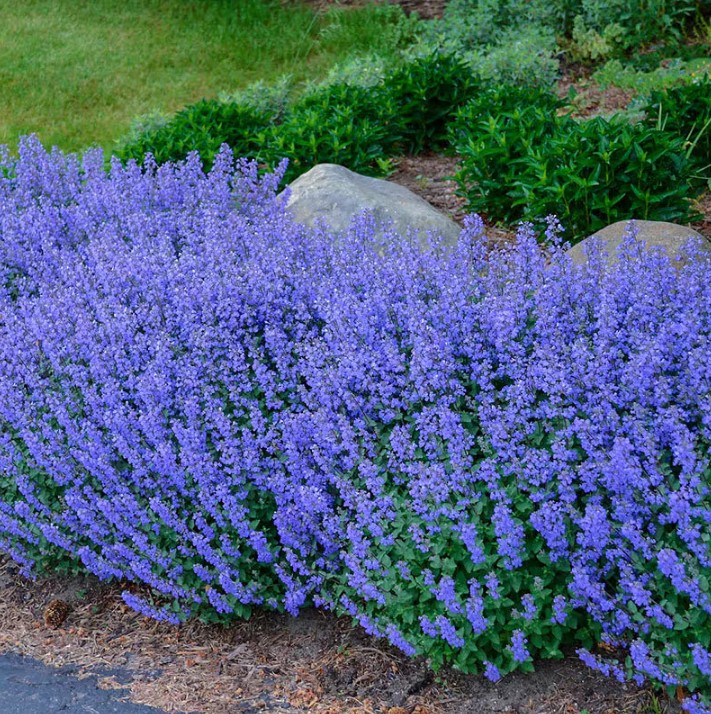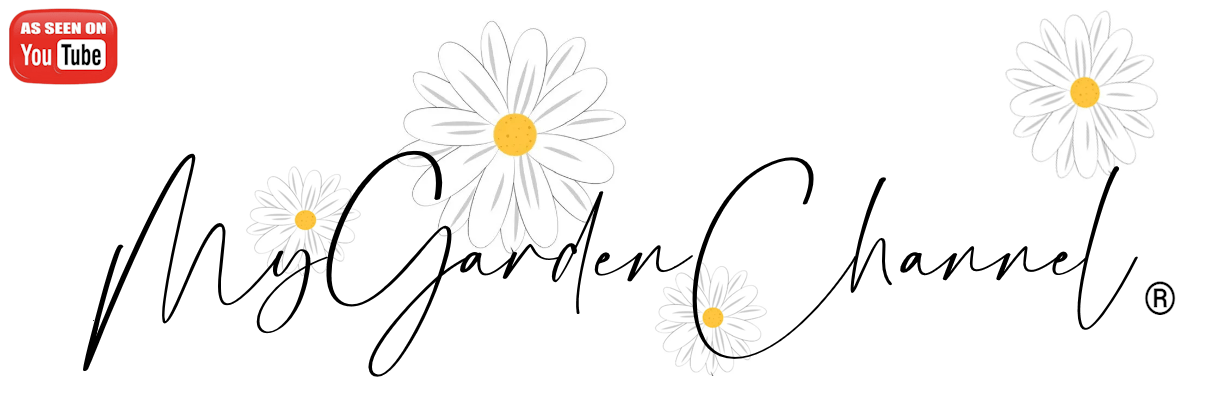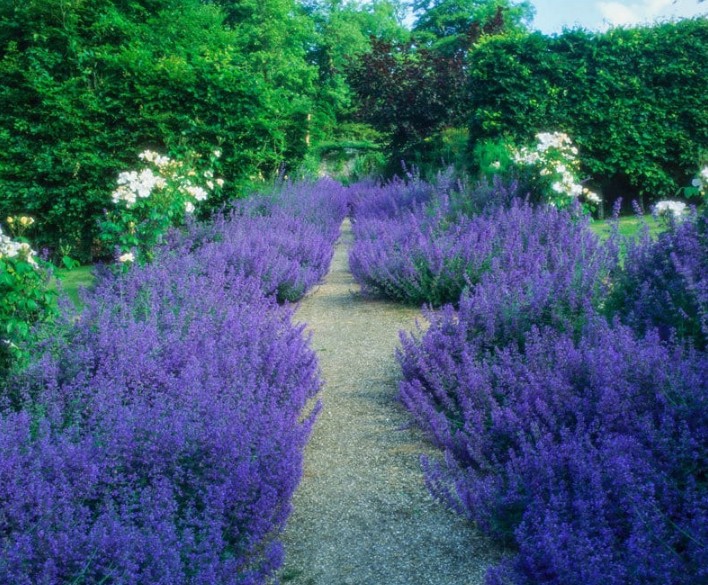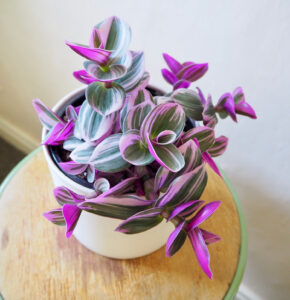Blue Catmint: A Hardy and Versatile Perennial for Gardens
Introduction
Blue Catmint (Nepeta faassenii) is a widely popular, low-maintenance perennial known for its aromatic foliage, profuse blue-lavender blooms, and exceptional resilience in gardens. A member of the mint family (Lamiaceae), this plant is a favorite among gardeners due to its long flowering period, also drought and heat tolerance, and ability to attract pollinators. Whether used in borders, rock gardens, or cottage-style landscapes, Blue Catmint provides a soft, flowing texture that enhances the beauty of any outdoor space.

Botanical Characteristics and Appearance
Blue Catmint is a compact, mounding perennial that typically grows between 12 to 24 inches tall and spreads up to 36 inches wide. Its finely textured, gray-green leaves are slightly fuzzy and emit a pleasant, minty aroma when touched or crushed. The plant produces an abundance of soft blue to lavender-colored flowers that form in long spikes, as well as creating a stunning contrast against the foliage.
The flowering period extends from late spring to early fall, making it one of the longest-blooming perennials in the garden. Unlike some other members of the Nepeta genus, Blue Catmint has sterile flowers, meaning it does not aggressively self-seed, making it easier to control in garden beds.
Ideal Growing Conditions
Blue Catmint is highly adaptable and thrives in various growing conditions, making it an excellent choice for beginner gardeners and those looking for a reliable, while being a fuss-free plant. Below are the optimal conditions for growing and maintaining a healthy Blue Catmint plant:

- Sunlight Requirements
- Prefers full sun (at least 6 hours of direct sunlight daily)
- Can tolerate partial shade, but flowering may be reduced
- Soil Preferences
- Thrives in well-draining, moderately fertile soil
- Prefers neutral to slightly alkaline pH levels
- Also can tolerate poor, sandy, or rocky soils
- Watering Needs
- Drought-tolerant once established
- Requires occasional watering in prolonged dry periods
- Avoid overwatering, as excessive moisture can cause root rot
- Climate and Hardiness
- Hardy in USDA zones 4-9
- Tolerates high heat and humidity better than many other perennials
- Can survive light frost and cold winters, returning in the spring
Garden Uses and Landscaping Benefits
Blue Catmint is a highly versatile plant. It can be used in various landscape designs. Below are some of the most common ways gardeners incorporate this resilient perennial into their gardens:

- Borders and Edging
- Its mounding habit makes it an excellent choice for lining pathways, driveways, or garden beds.
- Creates a soft, cascading effect when planted near stone walls or along garden edges.
- Rock Gardens and Xeriscaping
- Thrives in dry, also rocky conditions and adds a pop of blue to xeriscape gardens.
- Pairs well with other drought-tolerant plants like lavender, sedum, and also ornamental grasses.
- Cottage Gardens and Pollinator Gardens
- Complements classic cottage-style flowers such as roses, salvia, and coneflowers.
- Attracts bees, butterflies, and hummingbirds, making it ideal for pollinator-friendly gardens.
- Ground Cover and Mass Plantings
- Spreading growth habit makes it effective as a ground cover to suppress weeds.
- Creates a stunning visual effect when planted in large drifts.
Wildlife Benefits and Companion Planting
One of the key advantages of growing Blue Catmint is its ability to attract beneficial wildlife while deterring common garden pests:

- Attracts:
- Bees, butterflies, and hummingbirds, which help with pollination.
- Other beneficial insects that contribute to a healthy garden ecosystem.
- Repels:
- Deer and rabbits, because they dislike the strong fragrance of the leaves.
- Some pests, as its aromatic oils naturally deter insects like aphids and mosquitoes.
For companion planting, Blue Catmint pairs well with other sun-loving perennials such as:
- Lavender (Lavandula): Creates a harmonious color palette with similar growth requirements.
- Russian Sage (Perovskia atriplicifolia): Provides a stunning contrast in texture and height.
- Echinacea (Coneflower) (Echinacea purpurea): Attracts pollinators and extends the seasonal bloom interest.
- Daylilies (Hemerocallis): Adds bright, bold colors to complement Blue Catmint’s soft hues.

Pruning and Maintenance
Although Blue Catmint is an easy-care plant, occasional pruning enhances its appearance and encourages repeat blooming:
- Deadheading: Regularly removing spent flowers encourages continuous blooming throughout the season.
- Midseason Cutback: Cutting back the plant by one-third after its first major bloom flush promotes fresh foliage and a second bloom cycle.
- Winter Care: In colder regions, trimming the plant to a few inches above the ground in late fall or early spring helps rejuvenate growth.
Since Blue Catmint is naturally resistant to diseases and pests, it requires minimal intervention. However, ensuring good air circulation around the plant can prevent issues like powdery mildew.
Conclusion
Blue Catmint (Nepeta faassenii) is a must-have perennial for gardeners seeking a low-maintenance, long-blooming, and visually appealing plant. Its soft blue-lavender flowers, fragrant foliage, and pollinator-attracting qualities make it a valuable addition to various garden styles, from cottage gardens to drought-resistant landscapes. With its exceptional adaptability, deer and rabbit resistance, and easy-care nature, Blue Catmint continues to be a favorite among both experienced and novice gardeners. Whether used as a border plant, ground cover, or focal point in a pollinator garden, this resilient perennial offers beauty and functionality throughout the growing season.
Blue Catmint For Sale
Check out our Plant Shop to get this Blue Beauty!



